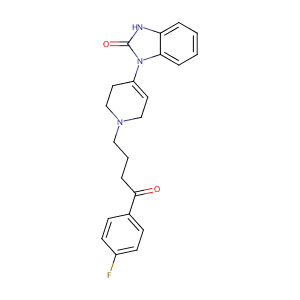| 1 |
ClinicalTrials.gov (NCT02744495) Prophylaxis of Postoperative Nausea and Vomiting After Cardiac Surgery
|
| 2 |
URL: http://www.guidetopharmacology.org Nucleic Acids Res. 2015 Oct 12. pii: gkv1037. The IUPHAR/BPS Guide to PHARMACOLOGY in 2016: towards curated quantitative interactions between 1300 protein targets and 6000 ligands. (Ligand id: 7172).
|
| 3 |
Betamethasone FDA Label
|
| 4 |
URL: http://www.guidetopharmacology.org Nucleic Acids Res. 2015 Oct 12. pii: gkv1037. The IUPHAR/BPS Guide to PHARMACOLOGY in 2016: towards curated quantitative interactions between 1300 protein targets and 6000 ligands. (Ligand id: 7061).
|
| 5 |
Alpha-adrenergic blockade: a possible mechanism of tocolytic action of certain benzodiazepines in a postpartum rat model in vivo. Life Sci. 2003 Jan 24;72(10):1093-102.
|
| 6 |
ADReCS-Target: target profiles for aiding drug safety research and application. Nucleic Acids Res. 2018 Jan 4;46(D1):D911-D917. doi: 10.1093/nar/gkx899.
|
| 7 |
Safety pharmacology assessment of drug-induced QT-prolongation in dogs with reduced repolarization reserve. J Pharmacol Toxicol Methods. 2006 Sep-Oct;54(2):130-40. doi: 10.1016/j.vascn.2006.03.011. Epub 2006 Apr 25.
|
| 8 |
Cell-based and cytokine-directed chemical screen to identify potential anti-multiple myeloma agents. Leuk Res. 2010 Jul;34(7):917-24. doi: 10.1016/j.leukres.2009.12.002. Epub 2010 Feb 8.
|
| 9 |
The cannabinoid CB2 receptor inverse agonist JTE-907 suppresses spontaneous itch-associated responses of NC mice, a model of atopic dermatitis. Eur J Pharmacol. 2006 Aug 7;542(1-3):179-83.
|
| 10 |
Structural determinants of P-glycoprotein-mediated transport of glucocorticoids. Pharm Res. 2003 Nov;20(11):1794-803.
|
| 11 |
Pharmacological screening using an FXN-EGFP cellular genomic reporter assay for the therapy of Friedreich ataxia. PLoS One. 2013;8(2):e55940.
|
| 12 |
Transactivation via the human glucocorticoid and mineralocorticoid receptor by therapeutically used steroids in CV-1 cells: a comparison of their glucocorticoid and mineralocorticoid properties. Eur J Endocrinol. 2004 Sep;151(3):397-406. doi: 10.1530/eje.0.1510397.
|
| 13 |
[Steroid drugs and GM-CSF modulates activity of Egr-1 in glioma cells]. Cir Cir. 2013 Jan-Feb;81(1):3-13.
|
| 14 |
Metabolism of synthetic steroids by the human placenta. Placenta. 2007 Jan;28(1):39-46.
|
|
|
|
|
|
|


